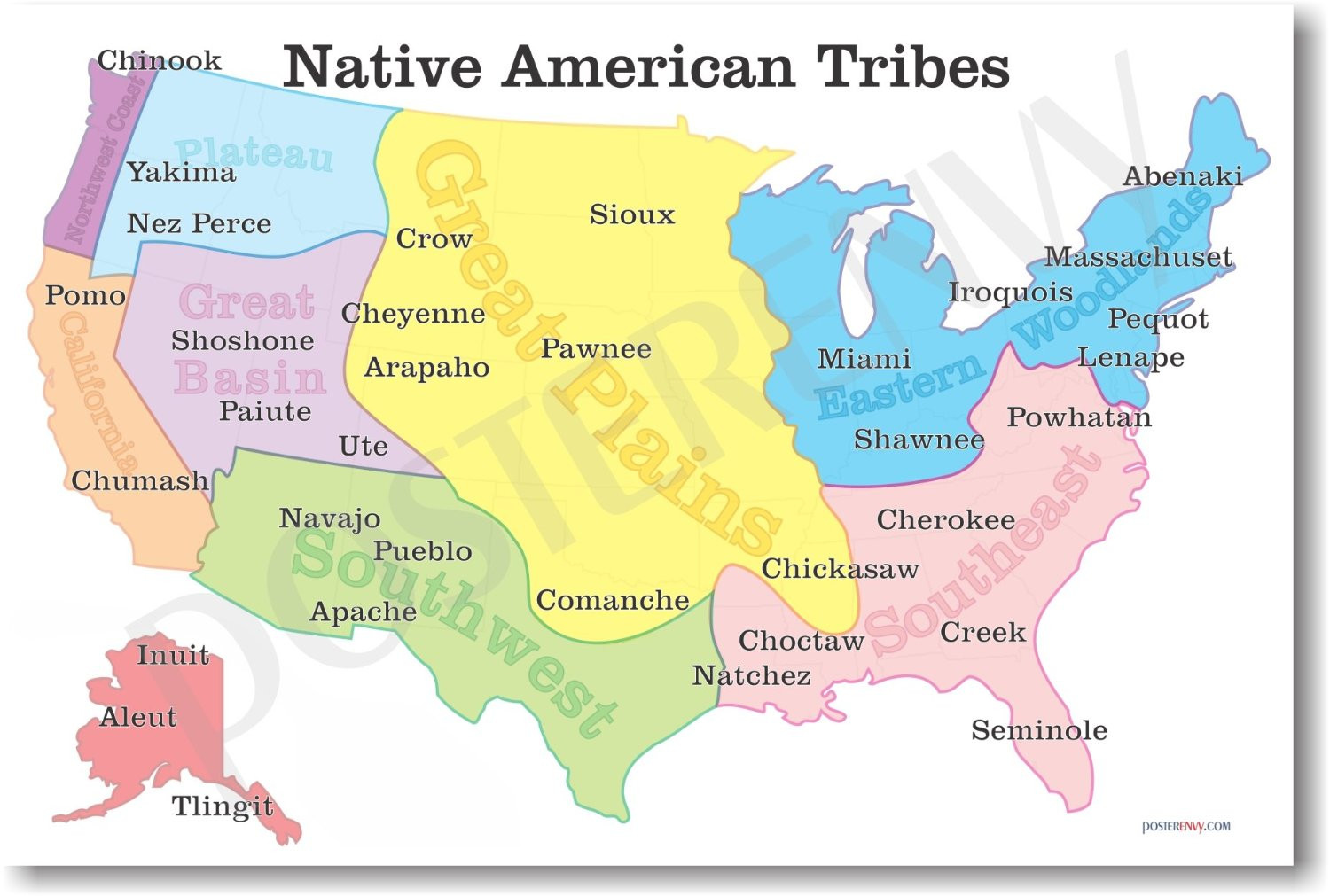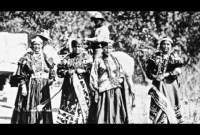
The Resilient Horizon: Charting the Future of Native American Nations
By [Your Name/Journalist Name]
The narrative of Native American tribal nations has long been etched in the annals of American history as one of displacement, resilience, and survival. Yet, to view Indigenous peoples solely through the lens of historical trauma is to miss the vibrant, dynamic, and forward-looking reality that defines their present and illuminates their future. Far from being relics of the past, tribal nations across the United States are powerful, sovereign entities charting a course of self-determination, economic innovation, cultural revitalization, and political influence that promises a profoundly different horizon.

This is not merely a story of endurance, but one of resurgence. From the high plains of the Dakotas to the deserts of Arizona, from the forests of the Pacific Northwest to the swamps of Florida, Native American communities are actively shaping their destinies, building robust economies, reclaiming ancient languages, and asserting their inherent sovereignty with unprecedented strength.
The Bedrock of Sovereignty: A Foundation for the Future
At the heart of the future for Native American nations lies the unwavering principle of tribal sovereignty. Not a privilege granted, but an inherent right recognized and affirmed through treaties, court decisions, and federal policy, sovereignty is the bedrock upon which all other advancements are built.
"Our sovereignty is not a gift from the federal government; it is inherent, existing before the United States was founded," asserts Chairman Mark Macarro of the Pechanga Band of Luiseño Indians. "It is the foundation of our ability to govern ourselves, protect our lands, and provide for our people."
Recent landmark legal victories, such as the 2020 McGirt v. Oklahoma Supreme Court decision, which affirmed that a large portion of eastern Oklahoma remains Muscogee (Creek) Nation reservation land for purposes of criminal jurisdiction, underscore the continuing evolution and assertion of tribal authority. This ruling, while complex in its implementation, has sent ripples across Indian Country, empowering tribes to further enforce their own laws and jurisdiction within their ancestral territories. Such decisions reinforce the legal framework that allows tribes to negotiate directly with states and the federal government, rather than being subject to their unilateral will.
Economic Diversification Beyond the Casino Floor
For many outside observers, the economic success of Native American tribes is synonymous with casinos. While gaming has undoubtedly provided a crucial revenue stream, lifting many tribes out of poverty and funding essential services, the future of Indigenous economies is far more diverse and sophisticated.
Tribal nations are increasingly investing in renewable energy projects, particularly solar and wind farms, leveraging their often-remote landholdings and commitment to environmental stewardship. The Moapa Band of Paiute Indians in Nevada, for example, hosts one of the largest solar power plants in the U.S., generating clean energy for thousands of homes and substantial revenue for the tribe.

Other ventures include high-tech manufacturing, sustainable agriculture, tourism (eco-tourism and cultural tourism), healthcare services, and even space technology. The Osage Nation in Oklahoma, for instance, has diversified its oil and gas interests into ventures like a state-of-the-art meat processing facility and a growing investment portfolio. This diversification not only creates jobs and wealth but also reduces reliance on a single industry, fostering more stable and resilient economies.
"Gaming gave us a start, but true self-sufficiency means building an economy that reflects our values and leverages all our assets," says one tribal economic development director. "That means innovation, sustainability, and creating opportunities for the next seven generations."
Cultural Resurgence: Rekindling Ancient Flames
Perhaps one of the most profound shifts in Native American communities is the vibrant cultural resurgence. Decades of assimilation policies sought to erase Indigenous languages, traditions, and spiritual practices. Today, tribes are leading a powerful movement to reclaim and revitalize these integral aspects of their identity.
Language immersion schools, like the Cherokee Nation’s Tsalagi Dual Language Immersion School, are teaching new generations the fluency of their ancestors, recognizing that language is the key to worldview and cultural understanding. Digital archives, online dictionaries, and social media campaigns are further aiding in the preservation and dissemination of endangered languages.
Traditional arts, ceremonies, and storytelling are also experiencing a renaissance. Powwows draw thousands, showcasing vibrant regalia, dance, and music. Indigenous artists are gaining global recognition, their work often weaving contemporary themes with ancestral techniques. This cultural revitalization is not merely about preserving the past; it’s about strengthening identity, promoting healing, and providing a powerful sense of belonging for youth.
"Our language is our soul, our connection to everything that came before us," states a young Navajo language teacher. "To speak it, to teach it, is to ensure our future."
Environmental Stewardship and Climate Leadership
Native American tribes have always maintained a profound connection to the land, air, and water. As climate change presents an existential threat, Indigenous nations are emerging as crucial leaders in environmental protection and sustainable practices. Their traditional ecological knowledge (TEK), accumulated over millennia, offers invaluable insights into managing ecosystems, adapting to environmental shifts, and fostering biodiversity.
Many tribes are at the forefront of climate adaptation efforts, from relocating coastal villages threatened by rising sea levels (like the Isle de Jean Charles Band of Biloxi-Chitimacha-Choctaw in Louisiana) to developing drought-resistant farming techniques in the Southwest. They are also powerful advocates against extractive industries that threaten sacred sites and natural resources, often leading the charge in national environmental movements.
"We have a sacred responsibility to care for Mother Earth, not just for ourselves, but for all future generations," says a tribal elder from the Pacific Northwest. "Our traditional knowledge holds solutions that the modern world is only beginning to understand."
Addressing Disparities and Building Healthier Communities
Despite significant progress, Native American communities continue to face disproportionate challenges in health, education, and social well-being, often stemming from historical trauma and chronic underfunding of federal services like the Indian Health Service (IHS). However, tribes are actively addressing these disparities through self-governance and innovative community-led initiatives.
Many tribes are taking over the administration of their healthcare and education programs, tailoring services to meet the specific cultural and linguistic needs of their populations. This includes integrating traditional healing practices, expanding mental health services to combat high rates of suicide and addiction, and developing culturally relevant curricula in schools. Investments in infrastructure, housing, and access to clean water are also critical components of building healthier, more resilient communities.
Political Power and Representation
The future of Native American nations also involves an increasing assertion of political power and visibility. Indigenous voters are a growing demographic, and their collective voice is becoming increasingly influential in local, state, and national elections.
The historic appointment of Deb Haaland (Laguna Pueblo) as the Secretary of the Interior, the first Native American Cabinet Secretary, symbolizes a powerful shift. Her presence in a department that historically oversaw federal Indian policy marks a new era of Indigenous perspectives directly influencing decision-making at the highest levels of government. Beyond this, a growing number of Native Americans are serving in state legislatures, on city councils, and in Congress, ensuring that tribal perspectives are represented across the political spectrum.
Challenges and the Path Forward
While the future is bright with potential, significant challenges remain. Poverty, substance abuse, and intergenerational trauma continue to impact many communities. Jurisdictional complexities and ongoing battles over land and water rights are persistent struggles. Furthermore, the need for adequate federal funding, often enshrined in treaty obligations, remains a critical area of advocacy.
Yet, the defining characteristic of Native American nations is their unwavering resilience. The future is being forged not by external forces, but by the determined spirit of self-determination within each tribal nation. It is a future built on the wisdom of ancestors, the strength of sovereignty, the dynamism of diversified economies, the vibrancy of revitalized cultures, and the unwavering commitment to the well-being of the next generation.
As Indigenous peoples continue to reclaim their narratives and assert their inherent rights, they are not only securing a vibrant future for themselves but also offering invaluable lessons in sustainable living, community resilience, and democratic self-governance for the entire world. The horizon is indeed resilient, painted with the enduring colors of Indigenous strength and self-determination.


